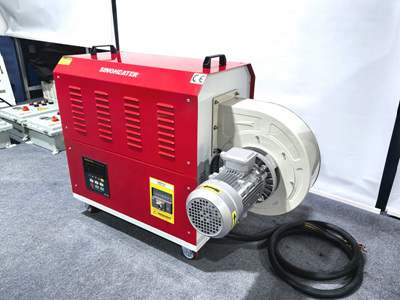The application of hot air blowers is very extensive. The following is a detailed introduction to their main uses:
First, the industrial field
Drying operation
In industries such as electronics, food, pharmaceuticals, printing, packaging, rubber and plastics, and glass, hot air blowers are often used to dry circuit boards, food, medicine, printed matter, packaging materials, rubber products, plastic products, and glass products, etc. By providing a stable hot air supply, the hot air blower can accelerate the evaporation of moisture and enhance production efficiency.
Heating and curing
In the coating industry, hot air blowers are used to accelerate the drying and curing process of coatings, improving the quality and efficiency of coating.
In the electronics manufacturing industry, hot air blowers are used in processes such as preheating electronic components, drying after soldering, and heating and curing during packaging.
Heating up and heat preservation
In industries such as steel and mining, hot air blowers are used to heat furnaces, preheat ores, dry materials, etc., to enhance production efficiency and product quality.
In some processes that require maintaining a constant temperature, such as chemical reactions and material testing, hot air blowers can provide a stable heat source.
Equipment preheating and dehumidification
In assembly lines, pipelines and equipment, hot air blowers can be used for product drying and dehumidification, keeping products dry and preventing corrosion and damage.
Before construction, using a hot air blower to preheat and heat the equipment or environment can ensure the normal operation of the equipment and improve construction efficiency.
Second, the agricultural sector
Heating of greenhouse sheds
In greenhouses and sheds, hot air fans can provide a stable heat source, offering suitable growth temperatures for crops and promoting their growth and development.
By adjusting the output temperature and air volume of the hot air blower, the temperature and humidity in the greenhouse can be precisely controlled to prevent crops from freezing or overheating.
Warmth preservation in animal husbandry
In the breeding farm, hot air fans can help keep chicks, animals in the flock transfer and fattening stages warm, improving their growth rate and health level.
Third, the field of architecture
Drying at the construction site
On construction sites, hot air blowers can accelerate the drying speed of concrete pavements, bridge decks and bridge piers, shortening the construction period.
When painting, coating and wall painting, the hot air blower can make the paint dry quickly and improve work efficiency.
Heating for temporary buildings
In temporary buildings such as tents, prefabricated houses, changing rooms and exhibitions, hot air fans can provide a comfortable temperature to ensure the work and living needs of people in cold weather.
Fourth, the commercial and civilian sectors
Heating of commercial places
In commercial places such as exhibition halls, meeting rooms and shopping malls, hot air fans can be used as temporary heating equipment to ensure the smooth progress of events.
Home heating
In some areas or households without centralized heating, hot air fans can be used as auxiliary heating devices to provide a warm and comfortable living environment.
Fifth, other uses
Anti-freezing heating for materials and products
In cold weather, hot air blowers can provide anti-freezing heating for materials and products, preventing them from being damaged by freezing.
Emergency heating and drying
In some emergency situations, such as equipment failure and pipeline blockage, hot air blowers can be used for rapid heating and drying to restore the normal operation of the equipment.
To sum up, the application of hot air fans is very extensive, covering multiple fields such as industry, agriculture, construction, commerce and civil use. Users can select the appropriate model and specification of the hot air blower based on specific application scenarios and requirements.



